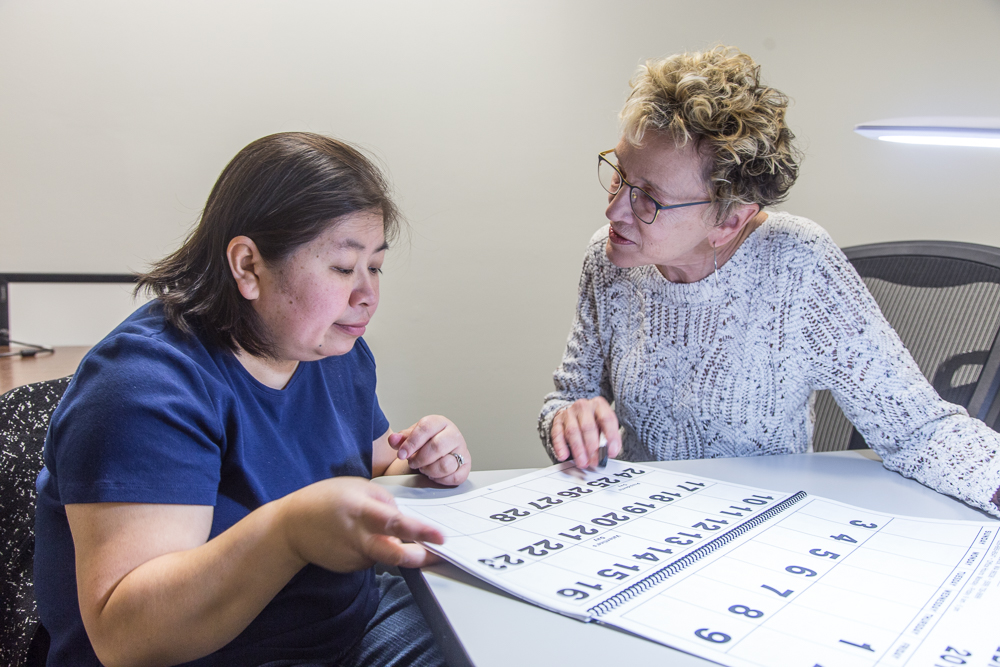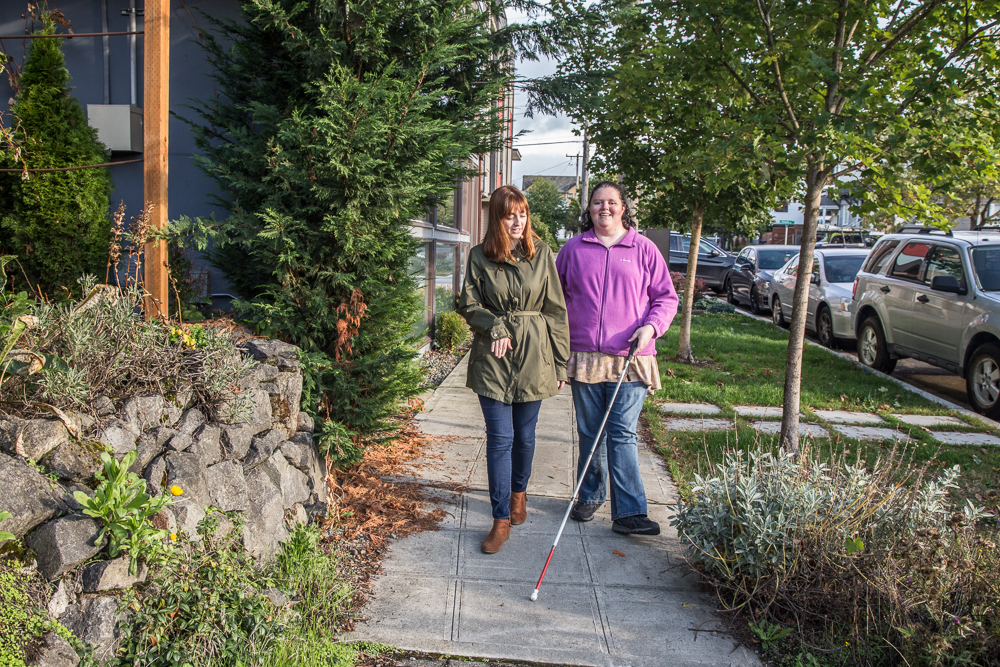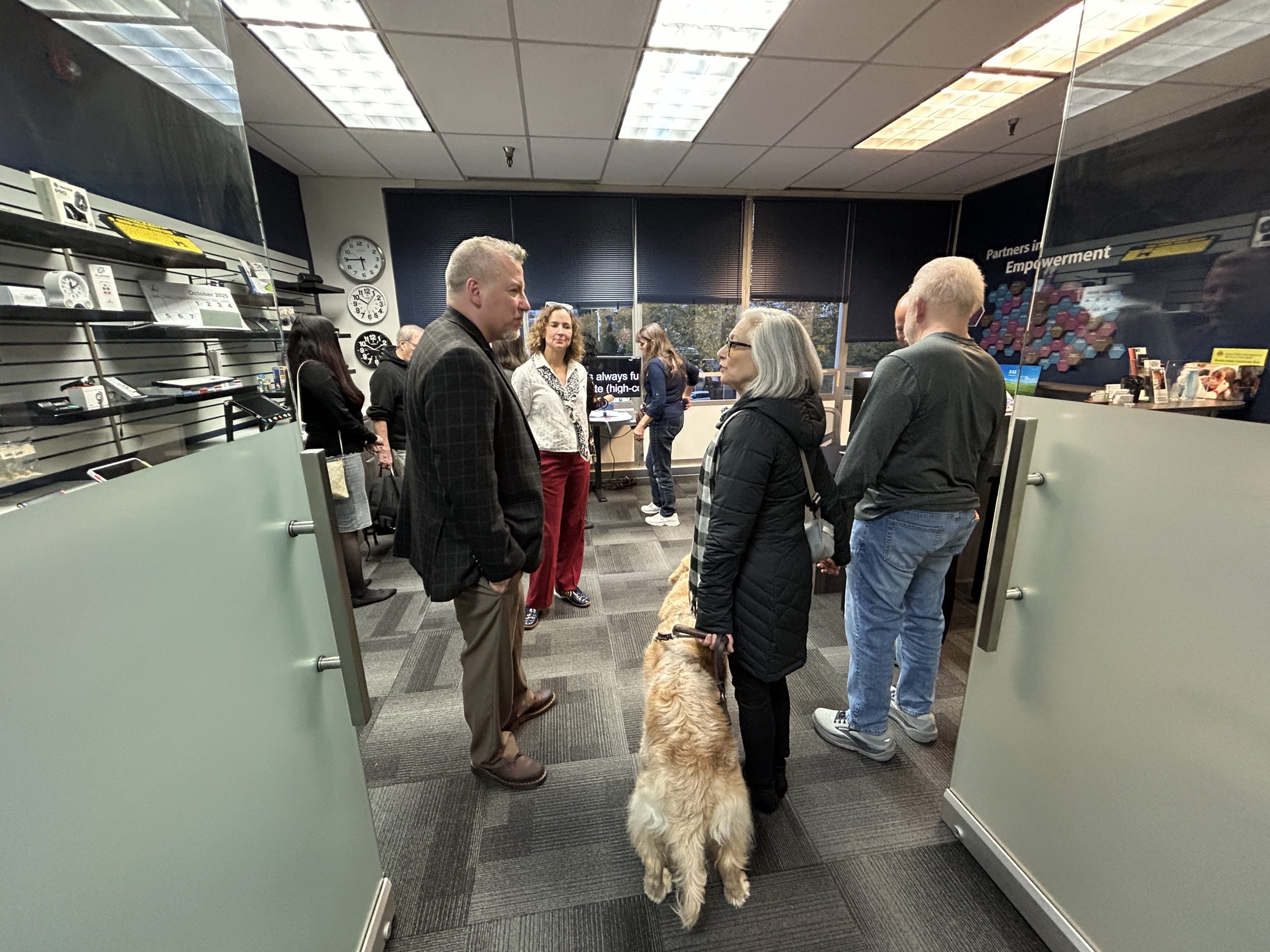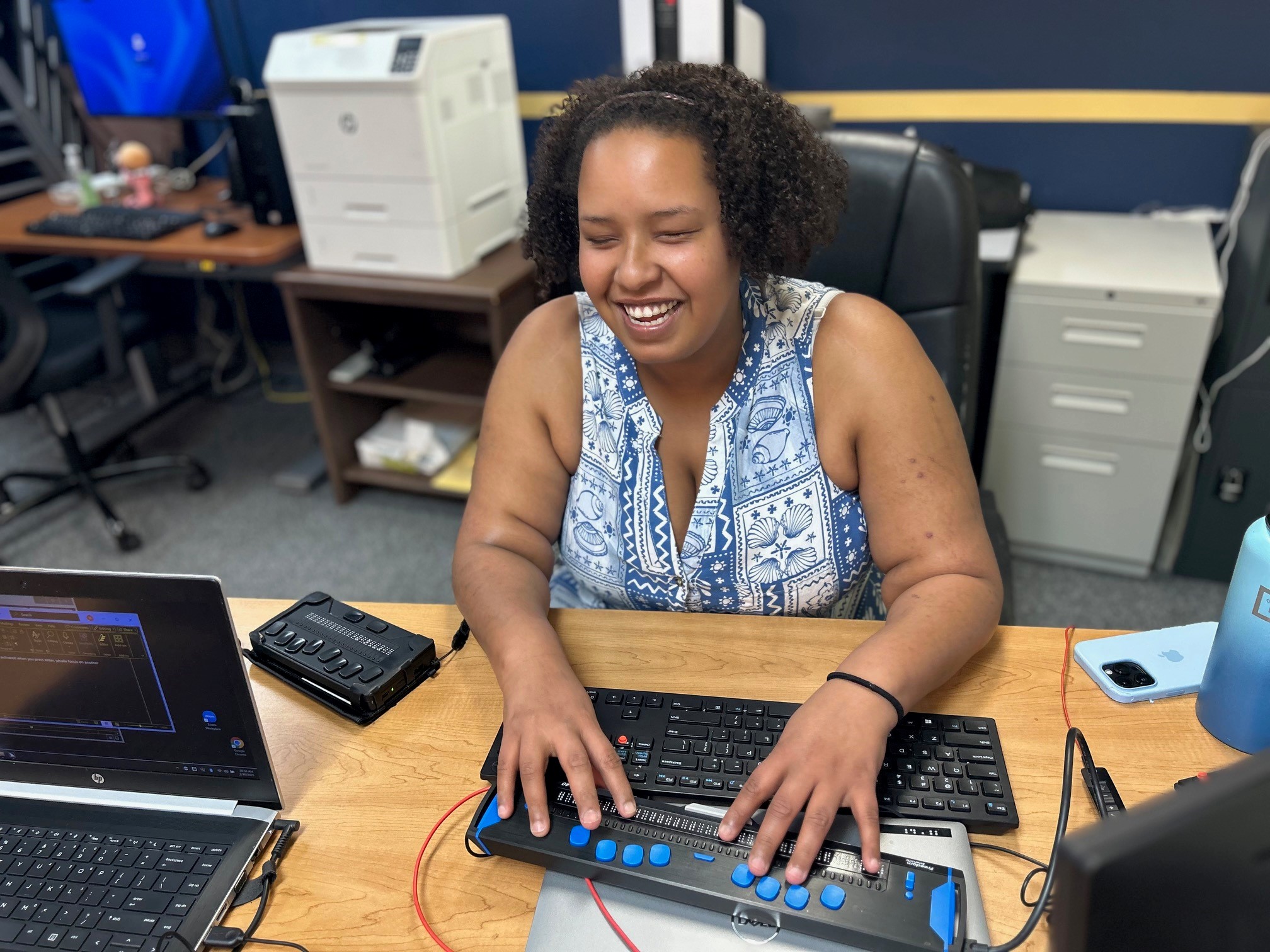16 Tips for Communicating With People Who Have Vision Loss

Do you know someone with vision loss? An encouraging and understanding support system is incredibly important to a person adapting to life with a vision impairment. Since each person’s experience of vision loss is different, open and clear communication fosters mutual understanding.
The following tips are general suggestions offered by people with vision loss. To avoid confusion and offer helpful assistance, it’s always best to ask the person how you can be most helpful.
- When greeting me, say your name, and let me know when you enter or leave a room.
- By looking directly at me and addressing me by name, I’ll know you are talking to me. Unless otherwise requested, there is no need to raise your voice or direct questions to a sighted companion.
- I want to do as much as I can, even if it takes me longer or if I do it differently than you would.
- If you think I need help, ask me first. If help is requested, I can tell you what I need or how we can do it together.
- When providing directions, try to be as specific as possible. Instead of saying, ‘It’s over there’, try, ‘The telephone is on your left’.

Image Description: Jane Elliott, Orientation and Mobility Specialist, is sitting at a table with a woman. There is a large print calendar in front of them that they are going over together.
- I may have an easier time reading menus, activity calendars, phone numbers, etc., if they are printed in large print, with bold, black letters. Sixteen-point font or larger is the easiest to read either via a computer or written with a bold, black pen on white paper.
- Tape or paint the edge of steps with a bright, contrasting color. White or yellow is usually best.
- Provide adequate lighting for the task at hand (task lighting), and in stairways and hallways.
- If I am walking with you, I will take your arm – please do not grab me. Using the human guide technique, I’ll walk a half step behind you to help me anticipate curbs, steps, and doorways.
- When guiding me to a chair, guide my hand to the back, arm or seat so that I can feel its placement and seat myself.

Image Description: An Orientation and Mobility Specialist is walking with another woman on a sidewalk outside. The woman is using a white cane and holding on the elbow of the Orientation and Mobility Specialist.
- Remember that a door to a room, cabinet or car left partially open is a hazard to me.
- With a few additional verbal and/or tactile directions and descriptions, I can participate in most any activity.
- Keep the environment as predictable and consistent as possible. If common rooms have been rearranged, I may need orientation to new surroundings.
- Dining may be made easier by placing food on dinnerware of a contrasting color; mashed potatoes on a dark plate, beets on a white plate, etc. Also, I may appreciate a clockwise identification of food placement on a plate (the meat is at 6 o’clock, potatoes at 9 o’clock, etc.)
- When offering me a ride, guide my hand to the car door handle. I will take responsibility for opening the door and seating myself.
- As I adjust to vision loss, I may experience a wide range of emotions, including worry, anger, frustration and fear. I will let you know how you can help, whether it is by listening or offering help when needed.
These tips are only suggestions. Each person has their own unique needs. It is most important to listen and always ask before assisting someone with vision loss.
For more information on vision loss visit the Low Vision Services page on our webpage.



